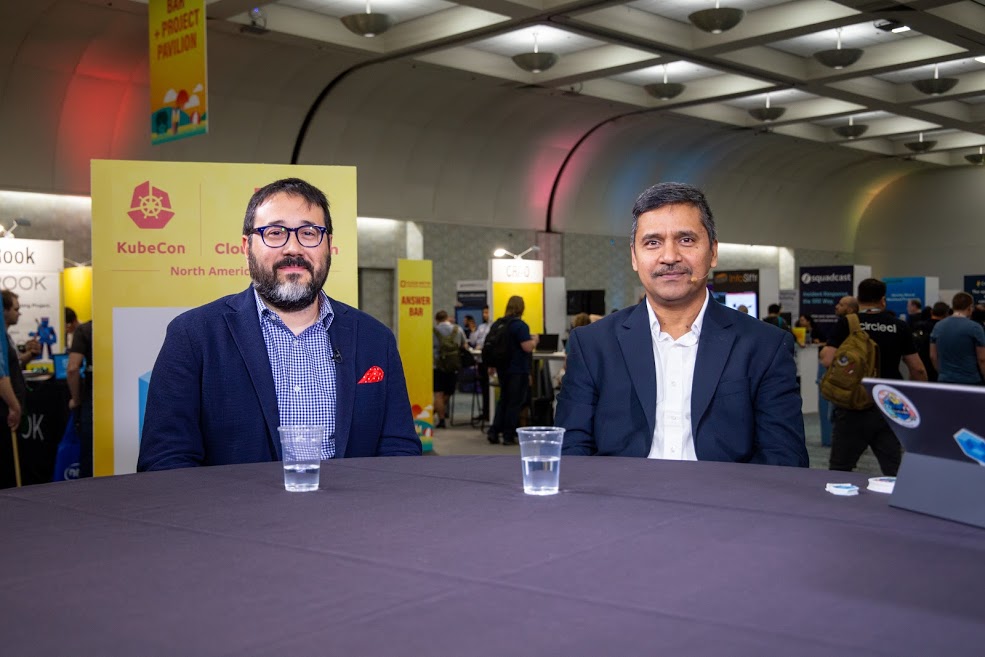 CLOUD
CLOUD
 CLOUD
CLOUD
 CLOUD
CLOUD
Containers and cloud-native applications are moving into telecommunications as part of the 5G future.
A proof of concept for how this might work was demonstrated at KubeCon + CloudNativeCon in San Diego this week, as representatives from Red Hat Inc. unveiled a fully containerized, end-to-end 5G network that was built using open-source technologies.
The buzz is mounting around 5G as the next generation of cellular network technology, and telco operators are taking a closer look at what cloud and containers can provide.
“All of the operators want a 5G service to be delivered; they don’t want to be left behind,” said Azhar Sayeed (pictured, right), chief architect of cloud and virtualization at Red Hat. “There are some operators who are even more opportunistic, looking at 5G as a way to insert themselves into different conversations. It’s an internet of things conversation, a smart city conversation, an edge compute conversation.”
Sayeed spoke with Stu Miniman (@stu), host of theCUBE, SiliconANGLE Media’s mobile livestreaming studio, and guest host John Troyer (@jtroyer) during the KubeCon + CloudNativeCon event in San Diego, California. He was joined by Hanen Garcia (pictured, left), global telco solutions manager at Red Hat, and they discussed the process involved in putting the proof-of-concept together and a realistic view of how long it will take for full 5G deployment to be achieved. (* Disclosure below.)
A demo team of over 30 volunteers from more than a dozen companies and open-source communities worked with Red Hat to connect labs in France and Canada with equipment on-stage in San Diego.
“We needed to build the infrastructure from scratch,” Garcia said. “We brought the 5G part here and had everything connected through the public cloud.”
Red Hat’s work in leveraging containers and cloud-native applications for 5G deployment is designed to address a growing realization that roll out of the next-generation technology will not be instant. Because of cost and complexity, implementation of 5G will likely be phased in gradually, and companies such as Red Hat are betting that open source will be part of that framework.
“Nobody is going to rip out their existing 3G/4G network and replace that with 5G by 2026; it’s not going to happen,” Sayeed said. “What will happen by 2026 is an incremental phase of services that will be offered. In terms of operational models, what’s applicable to IT will now be totally applicable on the telco network.”
Watch the complete video interview below, and be sure to check out more of SiliconANGLE’s and theCUBE’s coverage of the KubeCon + CloudNativeCon event. (* Disclosure: Red Hat Inc. sponsored this segment of theCUBE. Neither Red Hat nor other sponsors have editorial control over content on theCUBE or SiliconANGLE.)
THANK YOU